What to do when your sweet tooth is begging to be satisfied? Don’t just ignore your dessert cravings! Hang on tight ‘cause we’re about to go on the most exciting culinary adventure in Saigon where you can indulge your inner child with the tastiest of all of Vietnamese desserts. In actuality, Vietnamese desserts vary extensively in flavors and origins but they all taste divine. They are mainly made from rice, sugar cane, and fruits, especially coconuts.
There are so many dishes we could speak about, but here are the five most tempting desserts you shouldn’t miss when visiting Vietnam.
Contents
- 1 Chuoi chien (Fried Banana)
- 2 Khoai Lang Chien (Fried Sweet Potato)
- 3 Che (Vietnamese Sweet Soup)
- 4 Banh bo (“Cow” cakes or Steamed rice cakes)
- 5 Banh da lon (Pigskin cake)
- 6 Banh pia (Durian cake)
- 7 Rau Cau Dua (Coconut Jelly) and Flan Cake
- 8 Keo Dua (Coconut Candy)
- 9 Sinh To (Smoothies)
- 10 Marou chocolates
Chuoi chien (Fried Banana)
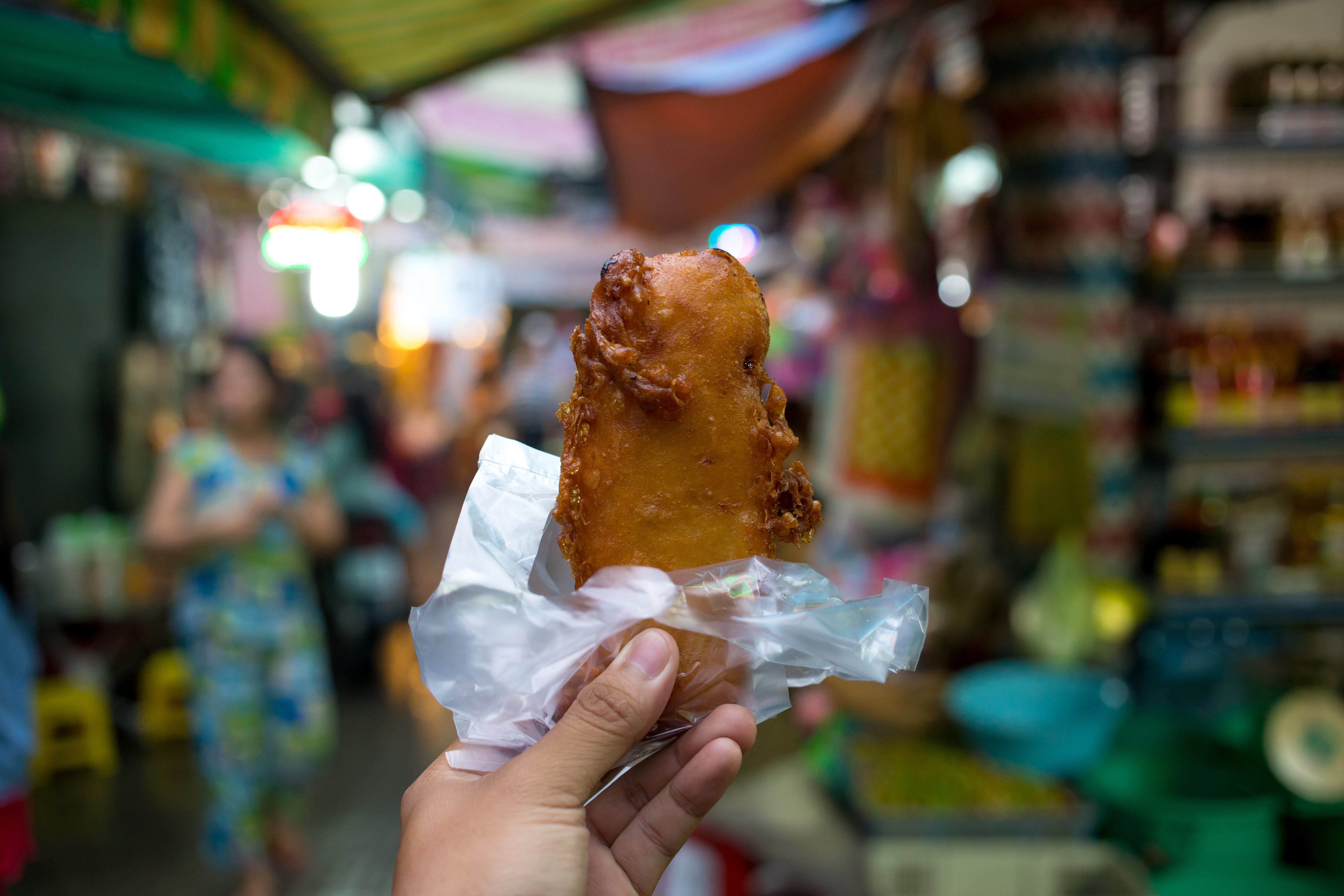
Fried banana is a street snack that is hard to forget. One taste instantly sends you back to those good old days of childhood when things were simple and just a few fried bananas on a rainy day could put a big smile on your face. Crunchy on the outside but warm and soft on the inside – every element complements each other perfectly. Chuoi chien is often made from a special variety of small, stubby bananas called chuoi su or chuoi xiem in Vietnam, which are much more fragrant and sweet than regular bananas. The secret to getting the most heavenly crunchy outer crust is to double deep-fry. When the banana fritter begins to brown, take it out and quickly dip it back in the batter, and then refry it. Serve the dish when it is still hot to maintain the crispness.
Where to find the best chuoi chien in Saigon
- Chuoi Chien – De Tham, 40 De Tham, Cau Ong Lanh Ward, District 1
- Banh Cay Chuoi Chien, 81 Tran Quoc Thao, District 3
- Chuoi Chien Gion, 100/27 Tran Hung Dao, Pham Ngu Lao Ward, District 1
Khoai Lang Chien (Fried Sweet Potato)
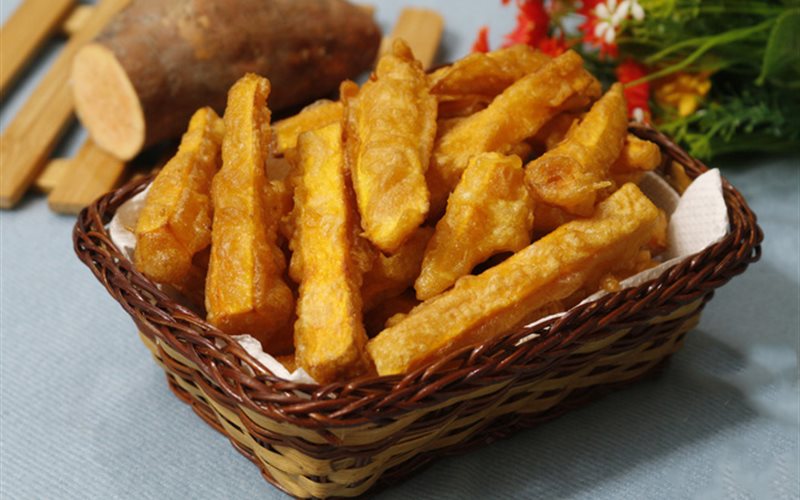
Back in the day, my mother would make khoai lang chien for the whole family after the kids played all day in the streets. This crispy homemade dessert was forever my most favorite snack because of its texture. You can see it’s quite similar to chuoi chien – fried banana; but sweet potato is less soggy, so it has a better taste for those who prefer a creamy and solid piece of fried snack. Normally people will fry a whole banana for one serving, but khoai lang is cut into smaller pieces so it looks a lot like french fries. Some places even grind the sweet potato to mix directly with flour, and mold it into ball shapes, which is more amusing to eat!
It’s also not very sweet like banana, so there are many savory recipe variations as well! This modern version of the dish has been more popular than ever, which actually took Vietnam by storm just a few years back. After frying the flour-covered sweet potato, the preparer will sprinkle a little cheese powder on the top to make the outer crust more flavorful. This recipe is not exactly a dessert, but it’s still worthy to try as a light meal for your day.
You’ll see a lot of vendors selling this together with fried banana, and other Vietnamese fried cakes. If you spot one, try the whole package with one of each kind!
Where to find the best khoai lang chien in Saigon:
- Khoai Lang Chien & Chuoi Chien – Co Tram, 7 Hoa Hiep, Tan Binh District
- Khoai Lang Chien Kammui, 87B De Tham, District 1
- Chuoi & Khoai Chien Ngoc Loan, 57/23 Ho Thi Ky, District 10
Che (Vietnamese Sweet Soup)
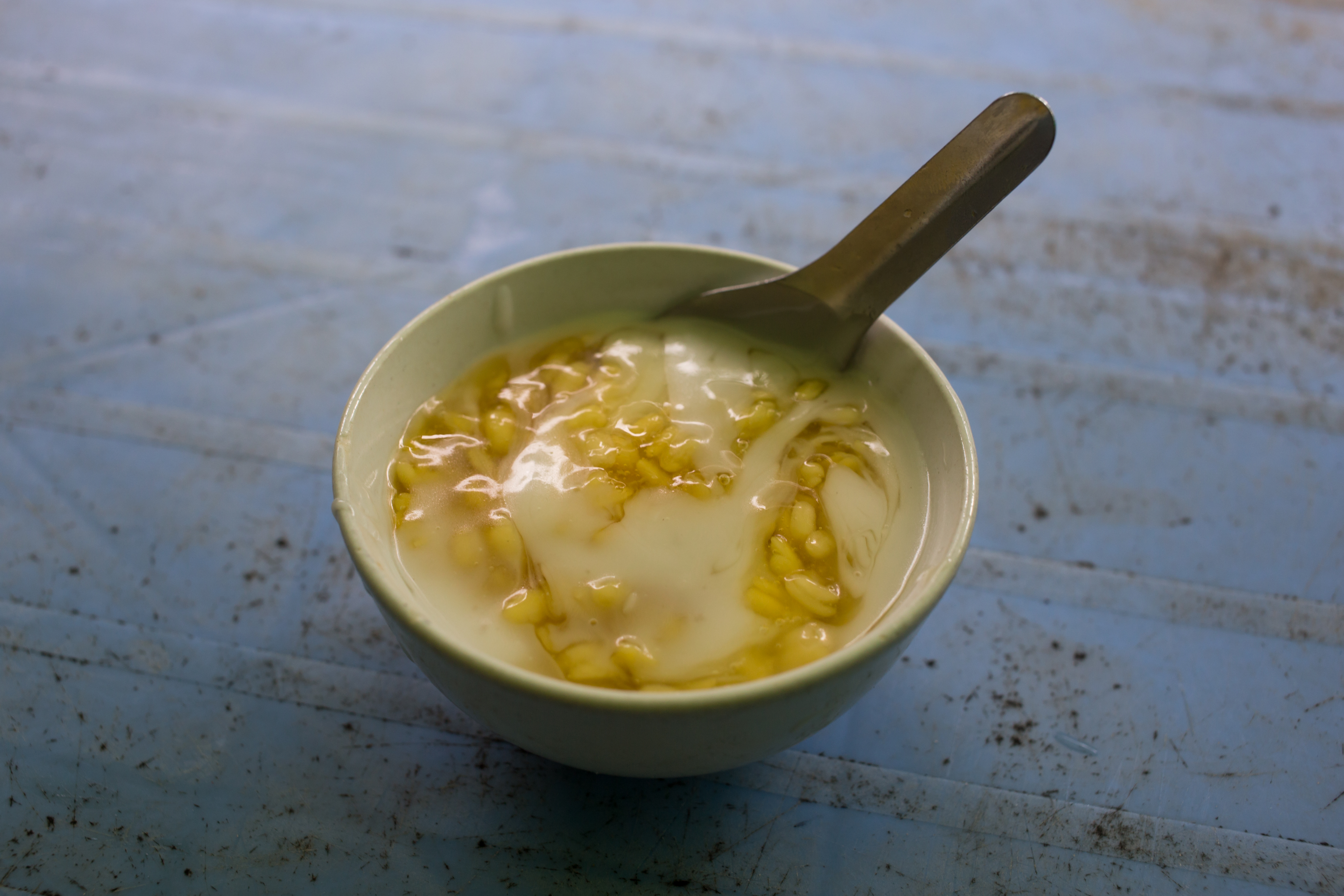
If you ask, probably every kid that you meet in Vietnam will know about che, a Vietnamese sweet soup or pudding which is super refreshing – a perfect way to stave off the tropical heat. There are probably a hundred or so types of che. Hot, cold, in a little bowl or a tall glass over ice – you can try them all!
The recipe calls for a wide range of beans, jellies, fruit, seeds, vegetables, glutinous rice and tapioca. You can run into a che street vendor or a shop almost anywhere in the city – along the street, at an outdoor market, down some alleyway– it is sold everywhere. Vietnamese people often have che not only for dessert but also for special occasions such as a child’s First Birthday, Lunar New Year, a death anniversary or a family gathering. Che definitely plays an important role in the culinary foodways of Vietnamese folk.
Due to its colorful elements, che is the most eye-catching and appetizing of all Vietnamese desserts. Without fail, a glass of che makes every kid jump up in excitement. Adults are even fans of this syrupy beverage.
It would be impossible to list out all types of che, even for a local. However, there are some most popular ones that are worth a try when you’re visiting Saigon:
- Che Ba Mau – three-color dessert
- Che Bap – Vietnamese sweet corn pudding
- Che Chuoi – banana with sago pearls and coconut milk sweet soup
- Che Troi Nuoc – sweet glutinous rice dumplings
- Che Buoi – Vietnamese pomelo sweet soup dessert
- Che Dau Den – black bean sweet soup with coconut syrup
Recipe for che ba mau
Here is an easy and delicious che ba mau recipe – the most colorful che among Vietnamese dessert if you’d like to make one yourself, so you also get to try this even though you aren’t traveling in Vietnam anymore.

Ingredients: (for 4 servings)
- White beans: 300 grams
- Red beans: 300 grams
- Green beans: 150 grams (there are often two kinds of green beans usually sold in Vietnam: with and without green skins. Choose the ones without the skin, which is yellow in color)
- Coconut milk: 100 milliliter
- Sugar: 200 grams (you can change this sugar level to your preference)
- Salt: 1 tablespoon
- Corn starch: 1 tablespoon
- Jelly powder: 1 pack
How to make it:
- First you need to wash all the beans carefully. Get rid of the ones that float to the surface because they’re probably hollow or damaged. After that, soak them separately in fresh and cold water for about 10 minutes.
Green beans:
- Cook green beans in 1 liter of water under medium heat. When it boils, lower the heat until the beans become tender. Take them out and place in a bowl to cool down.
- Use a blender to puree them with 50 grams of sugar, or adjust this amount to your preferred sugar level. Put the mix in the fridge when you’re done.
Red beans and white beans:
-Remember to cook these separately. Put in each pot 50 grams of sugar and 1 liter of water and cook for around 10 – 15 minutes. Also store them in the fridge after cooking.
- Then, mix coconut milk with cornstarch and salt. Cook the mixture until it becomes more solid.
- Add around 800 milliliters of water and 50 grams of sugar to jelly powder. Mix them well and stir in a pot with low heat. Leave it for a while to let the jelly cool down and harden. Cut them in small shapes.
…and you’re done! Now all that’s left to do is put each bean that you’ve cooked in a glass and top with some jelly, coconut milk, and ice. Enjoy the classic che ba mau made by you!
Where to find the best che in Saigon
- Khanh Vy Che tray shop (the Su Van Hanh street corner) Nguyen Chi Thanh Street, District 5
- Xoi che Bui Thi Xuan, 111 Bui Thi Xuan, District 1
- Che Ky Dong, 153/7 Ky Dong Street, Ward 9, District 3
- Hot Che shop, 50 Ly Chinh Thang, Ward 7, District 3 (open from 8 PM – 11 PM)
- You can find a unique variation of che from Cambodia, che campuchia, in Ho Thi Ky Flower Market. For more information, click here.
Banh bo (“Cow” cakes or Steamed rice cakes)
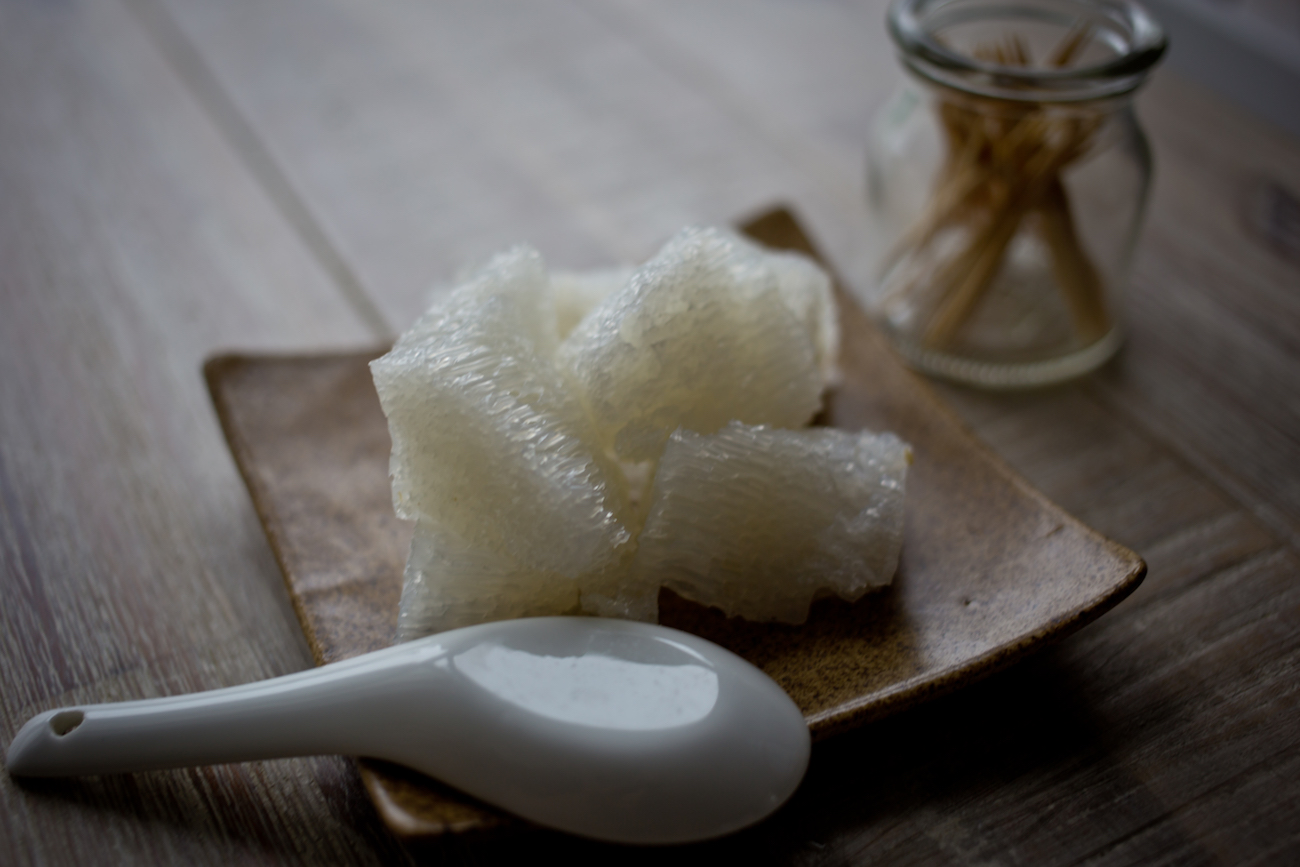
This is one of my favorite Vietnamese desserts. In Vietnam, there is a popular treat named after cows but isn’t made of beef or anything cow-related. Banh Bo literally means cow cake (“banh” means cake and “bo” means cow). Some say that it got the name from its inner texture, which resembles that of beef liver. Others say it’s because the cake looks like a cow’s udder implying that the name was shortened from bánh vú bò (cow udder cake). While the true origin of banh bo’s name is still shrouded in mystery, its tastiness is utterly undeniable. Soft, sweet and moist, banh bo is definitely the best dish to satisfy your sweet tooth. Cutting a piece of banh bo in half exposes an interesting spongy and fluffy interior.
The ingredients to making banh bo are quite simple: water, sugar, glutinous rice flour and yeast. Servers often add some sort of dye to color the dessert, and this not only to stimulates one’s appetite but also makes the dessert more aesthetically pleasing. When serving banh bo, sellers often sprinkle some sesame seeds on top and pour coconut milk sauce all over the cakes. The richness and aroma of coconut milk enhance the flavor, leaving you wanting more.
Where to find the best banh bo in Saigon
- Banh Bo Dong Thap, 352 Nguyen Trai Street, District 5
- Banh Bo La Dua, 3 Pham Ngoc Thach, District 3
- 40 Hong Bang, Binh Thanh District
- 575 Cach Mang Thang Tam, District 10
Banh da lon (Pigskin cake)
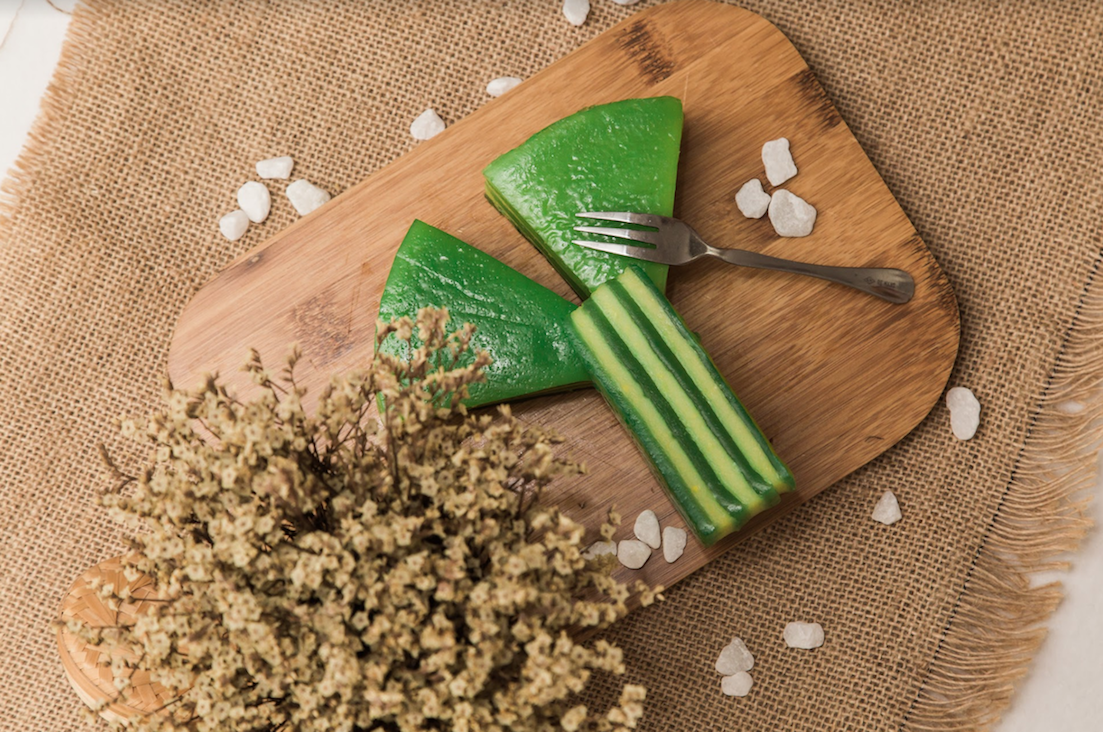
There are a few things in the culinary world that instantly scream “Vietnamese”, and I think banh da lon is one of those. This scrumptious dessert is a favorite among locals and found almost everywhere. Banh da lon sit patiently in the glass cases of street vendors, capturing the attention of passersby with their eye-catching colors.
Banh da lon is a steamed layer cake, which includes rice flour, tapioca starch, mashed mung beans, taro (or durian,) coconut milk and/or water and sugar. Its texture is soft, gelatinous and chewy, which explains why it is cheekily referred to “pig skin.” This dessert comes in all shapes and sizes with alternating layers of green and yellow tapioca flour.
Normally, one adds food or vegetable coloring to banh da lon for the sake of making it more eye-catching. The savory aroma of coconut, the richness of mashed mung beans and the softness of the cake all mingle together to create a pleasant taste that lingers on your taste buds long after your first bite. People eat Banh da lon no matter the occasion, as a dessert or a snack. Locals also use it as an offering to present one’s deceased loved ones on important days like a death anniversary.
Where to find the best Banh Da Lon in Saigon
- Banh Da Lon A Muoi, 270 Vo Van Tan, Ward 5, District 3
Banh pia (Durian cake)
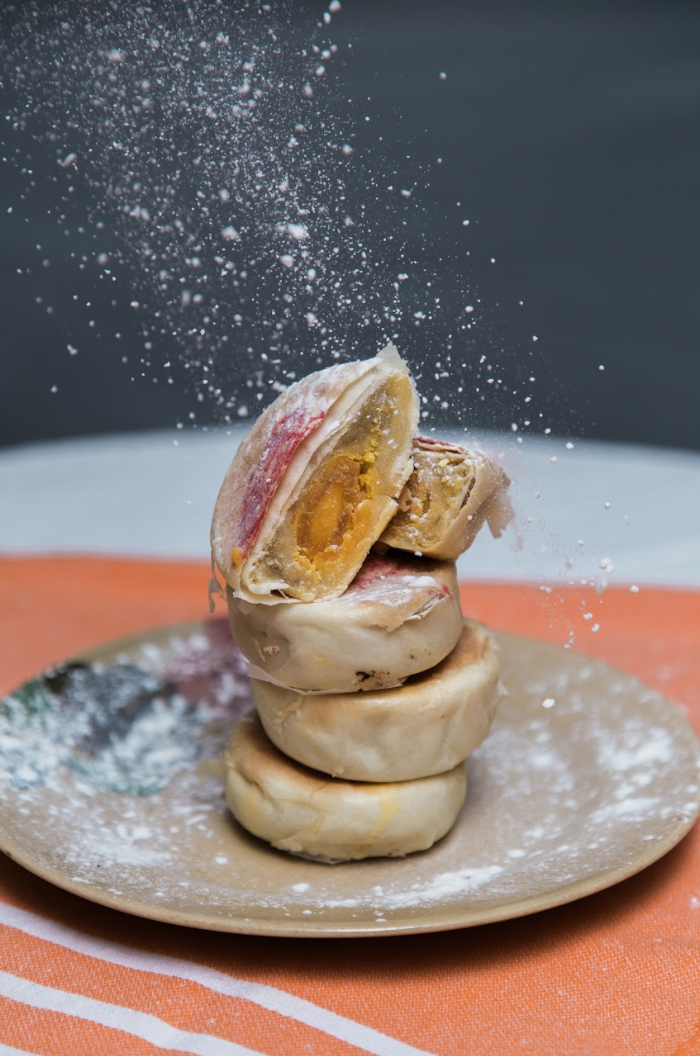
Banh pia is not as popular as the aforementioned dishes, primarily because the cake’s primary ingredient is durian– which certainly is not everyone’s cup of tea. However, if you are a fan of durians and have no issues with its ungodly odor, then the creamy banh pia is a must-try.
Banh pia is a puff pastry with a sweet filling made of durian, green bean and salted egg yolk. For many, the most special feature of banh pia lies in the flaky pastry crust; therefore, making the crust is the most sophisticated step in the process of baking banh pia. Locals traditionally serve this with hot ginger tea. One bite into a slice of banh pia while sipping on tea is a delightful experience. The sweetness of banh pia blends with the bitterness of tea creating a delicate aftertaste. A regional specialty of the South, specifically the Soc Trang province, every aspect of the baked good is a reflection of three ethnic groups: the Kinh, Hoa and Khmer.
If you are a fan of durians and have no issues with its ungodly odor, then the creamy banh pia is a must-try.
Where to find the best banh pia in Saigon
- Banh Pia Nhu Lan, 64 Ham Nghi, District 1
- Banh Pia Minh Dung, 169 Phan Dang Luu, Phu Nhuan District
- Banh Pia Soc Trang, R52 Nguyen Huu Hao, District 4
- Banh Pia Tan Hue Vien, 116C Nguyen Thi Nho, District 5
- Dac San Mien Tay, 123 Bach Dang, Binh Thanh District
Rau Cau Dua (Coconut Jelly) and Flan Cake
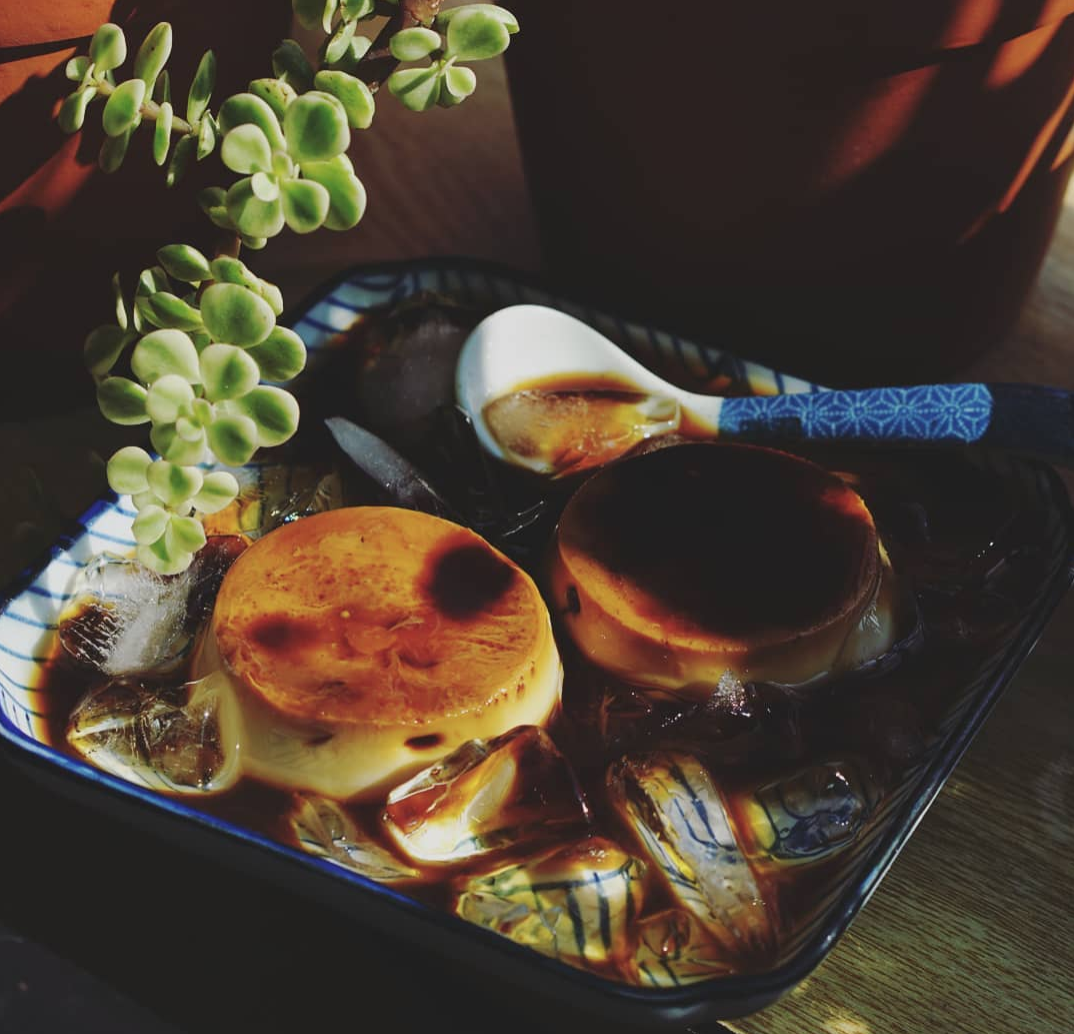
I have to say coconut is a very popular and important ingredient to make desserts in many Southeastern Asian countries, not just Vietnam. More or less, it appears in almost every sweet dish that the Vietnamese have on a daily basis. In a tropical country like Vietnam, you might as well drink the juice and eat the flesh of a raw coconut as a dessert, no need to cook it into anything! But coconut jelly is more flavorful and delicious, and you can see locals often eating it with flan cake, creating an unrivaled combo for desserts.
Normally it has two layers: a crystal part made mostly from coconut juice, the other white jelly is made more from coconut milk and flesh. Many places also use the empty coconut itself like a bowl to serve to customers. Take a bite, and you’ll feel an intense flavor of coconut. The glassy part is very refreshing, and it’s very likely to melt right in your mouth. On the other hand, the white layer is creamy and mushy, balancing what you’ve just tasted in the first bite. Since it is a very popular dessert in Vietnam, many locals have been adding different ingredients to make it more diversified, so you can also see other versions of rau cau dua in various colors and flavors!
People often have coconut jelly with flan cake, and a dish like that will just complete your sweet cravings. A complete portion is coconut jelly, flan cake, light coffee, ice, and more coconut milk sauce on top. Coffee is here to help ease the overwhelming richness of this dish, it’s the perfect drink to round out these flavors!
Where to find the best rau cau dua and flan cake in Saigon:
- Banh Flan Quynh Hoa, 194 Hoang Dieu, District 4
- Banh Flan Binh Thuan, 2 Vu Huy Tan, Binh Thanh District
- Rau cau dua and flan cake stall inside Ho Thi Ky Market, District 10
Keo Dua (Coconut Candy)
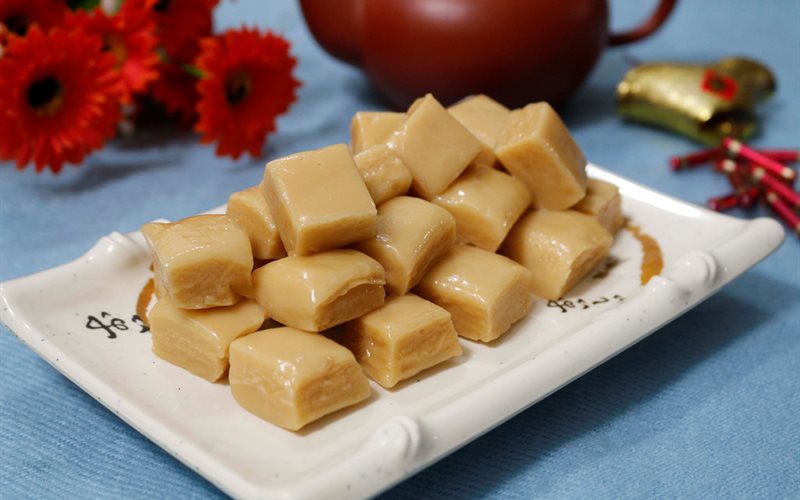
Here’s another kind of dessert coming from the southern part of Vietnam, Ben Tre province, a place that locals also often refer to as “the Land of Coconut”. Because of their abundant source of quality coconut, there are a lot of delightful coconut desserts and cuisine from Ben Tre such as soft coconut paper, coconut tuber, coconut wine, coconut rice, coconut everything. Among these, coconut candy is a handy sweet snack that you can easily find in many big cities in Vietnam.
This is a distinctive local specialty and also the longstanding work of a traditional handcrafted business of people from Ben Tre. Made from coconut, malt syrup, and sugar, this thick and buttery candy will surely satisfy your sugar rush any time. Remember that it is a very sticky confectionery so you probably can’t chew it all in one bite. Leave it inside your mouth for a while to soften the candy, and slowly chew from there. You’ll embrace all the richness from coconut cream and milk, and a touch of watery sweetness when the candy begins to melt. As coconut can also go well with other flavors, people often add in different ingredients such as durian, pandan, chocolate, or even strawberry.
Another special thing about this sugary gem is that it’s covered in a thin layer of edible rice paper, so don’t be surprised and peel it away! You can watch this video to see an authentic process of making this candy and understand more about each step.
Actually, keo dua is quite often sold in banh pia stores. You can also try asking the sellers if they have keo dua as well. Or visit one of these shops below in Saigon to buy some packs of Vietnamese coconut candy:
- Keo Dua Thanh Long, 67 Ngo Quyen, District 10
- Keo Dua Ben Tre Ba Hai To, 33T2, Duong Ba Trac, District 8
Sinh To (Smoothies)
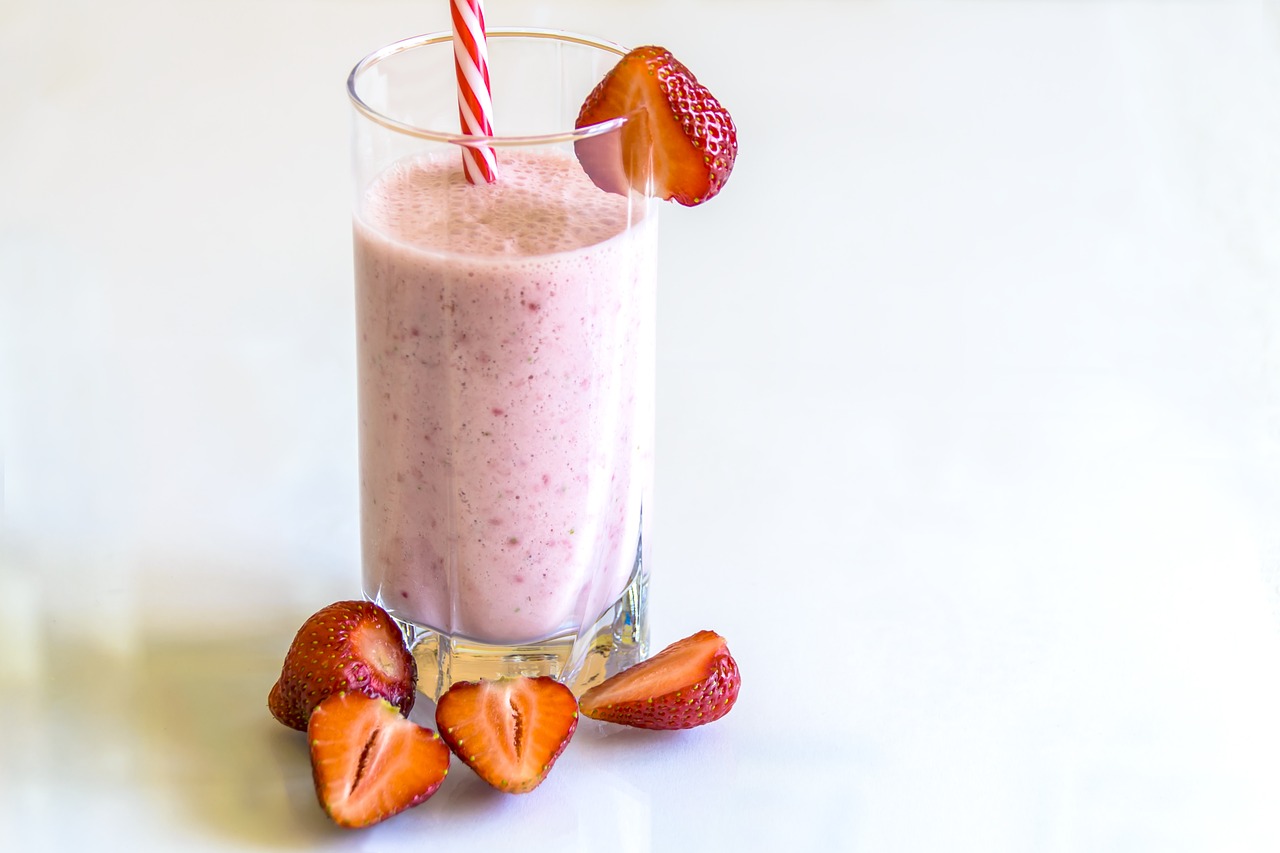
I’m sure everybody knows this excellent beverage and we can almost find them anywhere on earth. But smoothies in Vietnam are a little different than in other countries. We use several kinds of different fruits and ingredients, like tomato, durian, soursop, etc. and condensed milk especially to make smoothies creamier. Also, a typical smoothie store in Vietnam won’t have any vegetables (kale, spinach) to add.
Sinh to has been a very popular summer drink for people in Saigon because of its hot weather, so it’s extremely easy for you to spot a store in any district of the city. Have a sip of your favorite fruit while strolling around Saigon, it’s the perfect way to feel refreshed. One thing to remember: say or show this to the vendors – “khong duong”, or “it duong” if you want less sugar; or else it can be too sweet.
Where to find the best sinh to in Saigon:
- Five Boys Number One Smoothies, 84 Bui Vien, District 1
- The Juice Bar, 59 Hoa Su, Phu Nhuan District
- Banana’s Juice Shop, 102 Le Thi Rieng, District 1
Marou chocolates
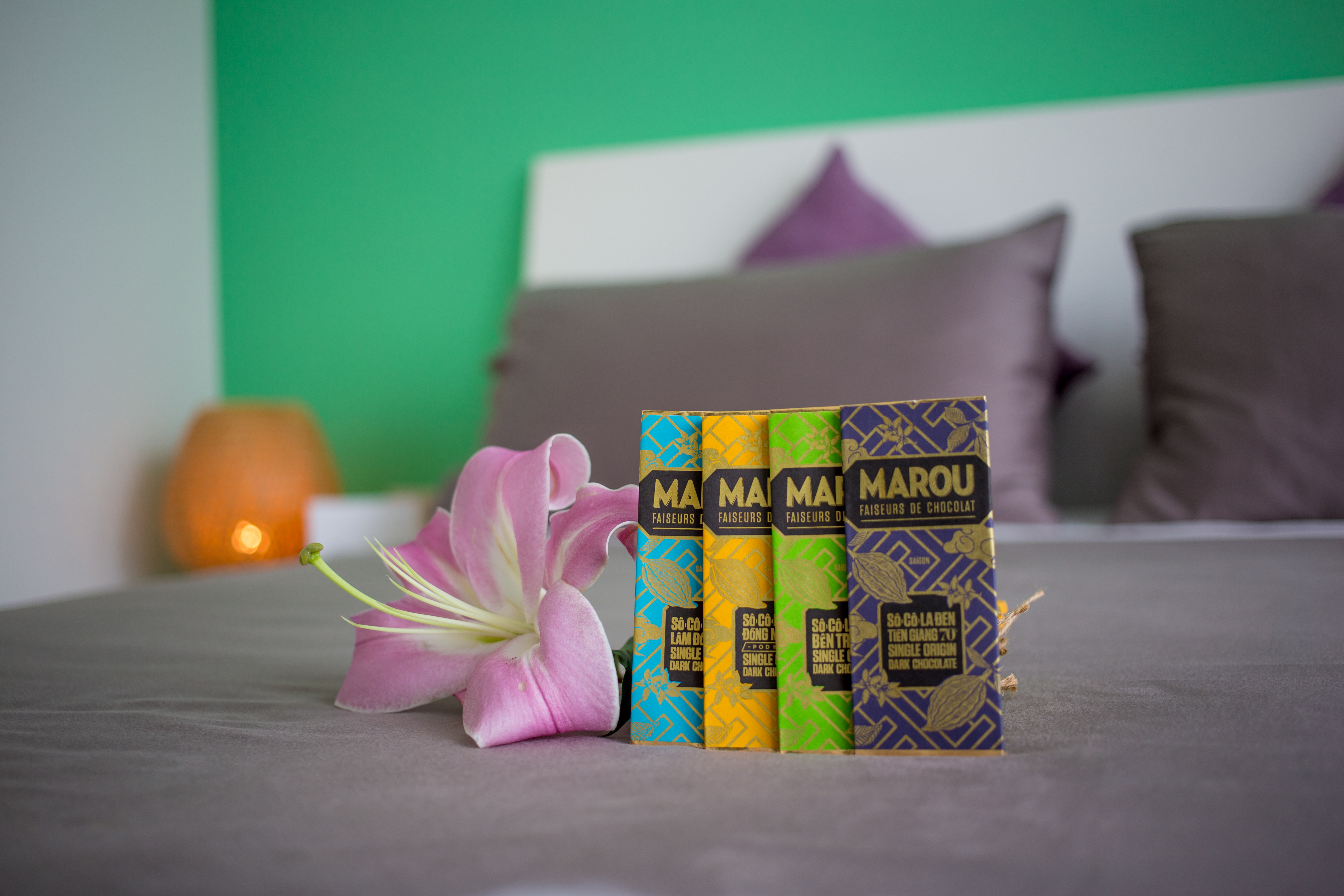
Whilst not exactly a traditional Vietnamese dessert, Marou produces award-winning single-origin and blend chocolates from cocoa sourced all over Vietnam. You may also want to visit Marou Maison – their chocolate-themed cafe, to get an authentic taste of their products. Here they served quality and hand-crafted chocolates and pastries made from local cocoa, and I really recommend their hot chocolate drink! The chocolate bars taste and look amazing, which can be a nice gift if you’re looking to take something back from your travels. They have only one address in town, right in the center of Saigon:
- Maison Marou, 167-169 Calmette, District 1
PS – Maison Marou is known to serve the best hot chocolate in town. Don’t miss out!
We hope that you are now craving every single one of the Vietnamese desserts mentioned on this list!
Enjoyed this article and want to learn about other Vietnamese food? How about some bun rieu, bo kho, or oc (sea snails)?
